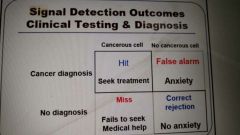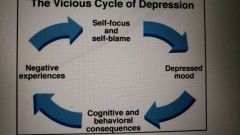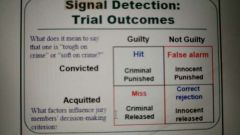![]()
![]()
![]()
Use LEFT and RIGHT arrow keys to navigate between flashcards;
Use UP and DOWN arrow keys to flip the card;
H to show hint;
A reads text to speech;
55 Cards in this Set
- Front
- Back
|
Peace |
A condition marked by low levels of hostility and aggression and by mutually beneficial relationships. |
|
|
Conflict |
A perceived incompatibility of actions or goals. |
|
|
Divergence of Interest |
Social trap (self-interest and collective-interest |
|
|
Discontinuity Effect |
People are more competitive and less cooperative in a group context |
|
|
Social Dilemmas... |
Include mixed motives and interests and underlie various problems |
|
|
2-Party Prisoner's Dilemma |
Both confess= 5 years each Both deny= 1 year each One confesses, one denies= 0 years for confessor, 10 years for denier |
|
|
Tragedy of the Commons |
Depletion of shared resources because individuals consume more than is necessary to sustain them. |
|
|
Relative Deprivation |
The perception that one is less well-off than others with whom one compares oneself. |
|
|
Sherif's Boys' Camp Experiment |
Showed group polarization and was similar to Lord of the Flies between the two groups |
|
|
Changing payoffs to resolve social dilemmas... |
Helps resolve conflict |
|
|
Mirror-image Perceptions |
Reciprocal views of each other often held by parties in conflict. |
|
|
Deutch & Kruss trucking game |
The truckers would rather take the long way than work together to open the gaits because they feel threatened by the other's success |
|
|
Conflict Escalation |
Use of progressively more contentious tactics (negative attitudes, dehumanizing other party, deindividuating the other party, blaming the other party). |
|
|
Conflict Resolution: Antecedent |
Ripeness (motivation to escape conflict escalation, hurting stalemate, and an enticing opportunity) |
|
|
Conflict Resolution: Communication |
Bargaining, mediation, arbitration, autocratic decision making |
|
|
Mediation |
A neutral third-party offers suggestions to the parties that allow each party to make concessions and still save face |
|
|
Arbitration |
Having a mediator make the final decision |
|
|
GRIT steps |
1. Someone decides they want to deescalate a conflict and propose an initiative to do so 2. Initiative is carried out as proposed 3. Other party makes a more cooperative move and then the initiator and so on |
|
|
Health Belief Model |
Beliefs concerning effectiveness and consequence of a particular action determine whether one would act |
|
|
Health Psychology |
The study of the psychological roots of health and illness. |
|
|
Downstream vs. upstream approaches to health |
Downstream: individual Upstream: environment |
|
|
Catastrophes |
Natural and human-induced disasters |
|
|
Significant life changes |
Negative and happy life changes |
|
|
Chronic daily hassles |
Micro-stressors like crowding and pollution |
|
|
General Adaptation Syndrome phases |
Alarm, resistance, and exhaustion |
|
|
Depressive Explanatory Style |
. Failure is stable (it's going to last) . Failure is global (I'm ruined) . Failure is internal (it's my fault) and |
|
|
Signal Detection Theory in the clinic |

|
|
|
Illusory Correlation |
Believing two things are associated when they really aren't |
|
|
Confirmation Bias |
Finding what you want to find that confirms your theory |
|
|
Hindsight Bias |
"I should have known" |
|
|
Vicious cycle of depression |

|
|
|
Seligman's explanation for depression |
A rise in individualism and concomitant decline in commitment to common good |
|
|
Minimizing wrongful convictions based on faulty eyewitness testimony |
. Allow witnesses to give own answers first . Practice with false lineup . Reinstate the context . Instant recognition vs. elimination |
|
|
Signal Detection Theory of trials |

|
|
|
Media effects |
. Influence on specific cases . Perceptions of crime prevalence |
|
|
Bad interrogation... |
. Leading questions . Creation of false memories |
|
|
Voir dire |
A preliminary examination of a witness or a juror by a judge or counsel (to eliminate bias) |
|
|
Death-qualified jurors are... |
. More concerned with crime control than due process of law . Authoritarian . Rigid . Punitive . Closed to mitigating circumstances . Contemptuous of the lower class |
|
|
Misinformation effect |
Post-event information changes the memory |
|
|
Certainty and eyewitness accuracy are... |
Unrelated |
|
|
Dunning and Stern instant recognition vs. elimination |
Instant recognition = more accurate |
|
|
Eyewitness testimony |
Makes conviction rate skyrocket |
|
|
Recalling minute details & perception of eyewitness |
Makes them seem more reliable to jury, but they may not be remembering the important details |
|
|
Jury consensus building |
. Encourages juries to consider info more carefully . Minority can exert influence |
|
|
Importance of 12-person jury |
. To forestall excessive conformity pressures . To ensure representation of minority groups |
|
|
Things that work in the defendant's favor |
. Similarities to jury . Attractiveness |
|
|
Judge's instructions |
Make information to be ignored more influential |
|
|
Population Crowding |
Subjective feeling that there are too many people in a given space |
|
|
Population Density |
Number of people in a given space |
|
|
Natural environmental disasters |
. Global warming -> Greenhouse gasses . Acid rain -> Destroying plants and marine life . Industrial pollutants -> Urban smog . Toxic waste -> Poor countries . Pollution -> 1/3 people will get cancer |
|
|
Human environmental disasters |
. High crime rate -> Poverty & neglect . Drug violence -> Economic & social situations . Crumbling schools and reduction of workforce pool . Overpopulation -> Resource depletion |
|
|
Affluence and happiness |
The more you have, the less happy you are |
|
|
Promoting environmentalism |
. Attitude change through education . Changing payoff matrix . Hypocrisy induction: dissonance . Feedback provision |
|
|
Toward sustainability and survival |
. Close, supportive relationships . Faith communities . Positive thinking habits . Experiencing nature . Flow |
|
|
Speth's role of identity in environmentalism |
. Positive view of future generations . Acknowledgement of our interdependency . Valuing relational and spiritual wellbeing |

